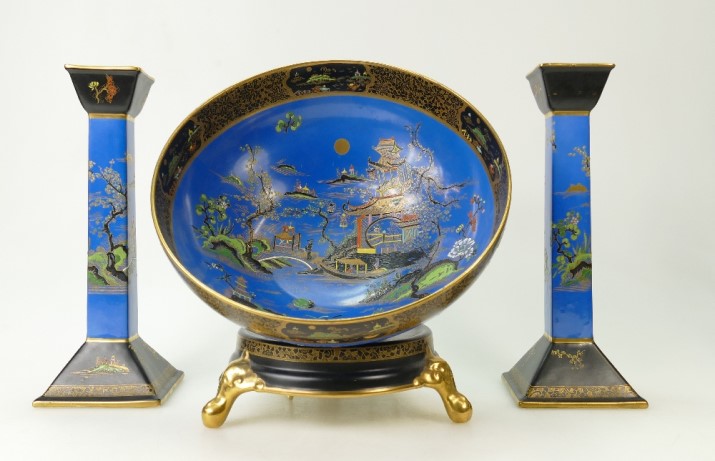
Carlton Ware Pottery was established in Stoke-On-Trent in 1890, producing giftware and domestic pottery throughout much of its history.
Are you looking to sell your Carlton Ware pottery? Do you need help to check the value of your collection, or want to purchase even more Carlton Ware for your home? We can help.
Our Carlton Ware marking guide will help you identify markings and the possible production dates of your Carlton Ware pieces. Explaining how to distinguish valuable and precious items, allowing you to sell your own pieces or invest in more.
Keep reading to see how much your pottery could be worth!
Why is Carlton Ware Pottery Popular?
Established in 1890, Carlton Ware was always manufactured in Stoke-on-Trent, right up to its closure in the 1990s. It is another fabulous, local manufacture that we are proud to identify, value and sell.
In the 1920s and ‘30s, Carlton Ware was credited with creating the pottery Art Deco movement. This was due to the unique decal hand-painted finishes and high glaze substrate firing. During this time, Carlton Ware even created a wonderful series of tableware inspired by the artwork discovered in Tutankhamun’s tomb.
However, Carlton Ware Pottery is most famously known for creating elaborate and brightly coloured decorative pottery and giftware. The most recognisable piece is perhaps the Guinness Toucan. These were used for marketing and promotions in the 1950’s and still prove to be very popular collectors’ items to this day. The Toucan is often tremendously popular at our auctions, with the lot below selling for an incredible £1000!

How Do I Know If My Carlton Ware Pottery is Valuable?
After the closure of the Stoke-on-Trent factory, there have been a sizeable amount of counterfeit Carlton Ware Pottery pieces. These often have fake backstamps that are difficult to distinguish from the original backstamps. The best way to recognise these is to compare them to original pieces or have your pottery valuated and assessed by our experts. You can read more Carlton Ware facts here.
What Carlton Ware Markings Should I Look For?
Carlton Ware backstamps and markings to look out for include:

The Ribbon Mark (1890-c1893). The original backstamp, this was used by Wiltshaw & Robinson when the pottery house was created in 1890. It could be blue, brown or maroon.

The Earlier Crown Mark (c1894 – c1926). This mark can appear in a variety of colours: blue, black, or gold.

The Later Crown Mark (c1929-c1926). This mark is similar to The Earlier Crown Mark, however this mark has only been printed in black.

The Heraldic China Mark (1930-c1926). These marks are usually printed in black.

The Script Mark (1926-1987). This mark has multiple variants and was used for the longest period. Printed in blue, black or gold.

The China Mark (1928-1932). This marking was used on bone china.

The Cooper Black Mark (1969-1989). This marking was introduced in 1968 after Arthur Wood & Sons purchased Carlton Ware. It may appear in yellow or black.

The Lustre Pottery Mark (c1974-1987). Used on the Walking Ware pottery line.
Photo Credit: Backstamps – Carlton Ware World.

Where to Sell Carlton Ware Pottery
We have successfully sold Carlton Ware Pottery for years, such as the stunning Carlton Ware Bird of Paradise vase above. Do you have similar pieces in your home? We can identify and provide valuations on your Carlton Ware Pottery pieces. Please get in touch with us to discuss how we can help you or request a call back if you are looking for an expert evaluation and are seeking to sell your Carlton Ware Pottery.
If you are concerned about identifying counterfeit pieces, our experts can help identify and value your pottery in no time at all. We can sell or value your items and we can also help spot fraud pieces. Get in touch today.

1 thought on “A Guide to Carlton Ware Pottery Markings”
Comments are closed.